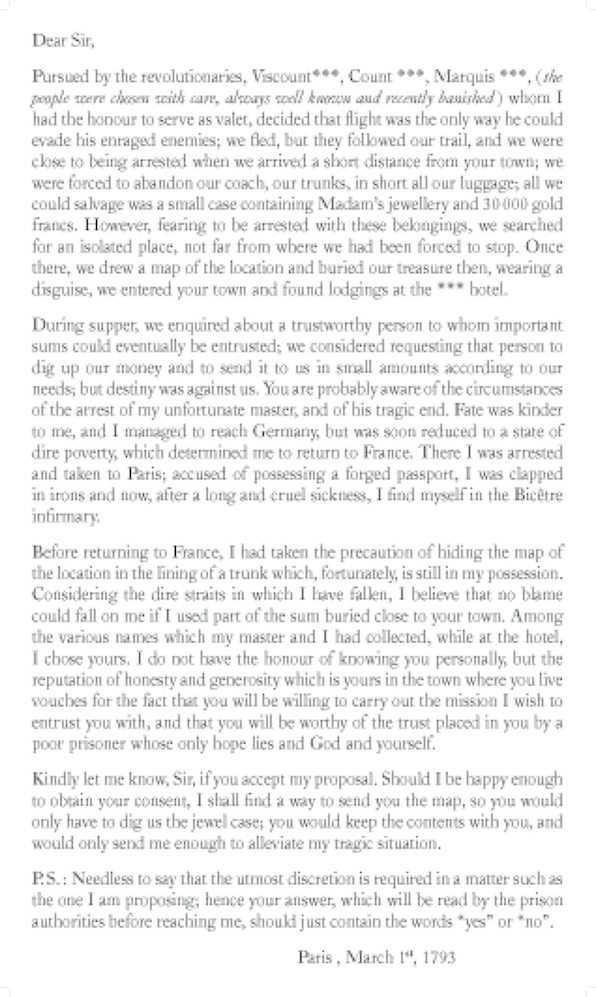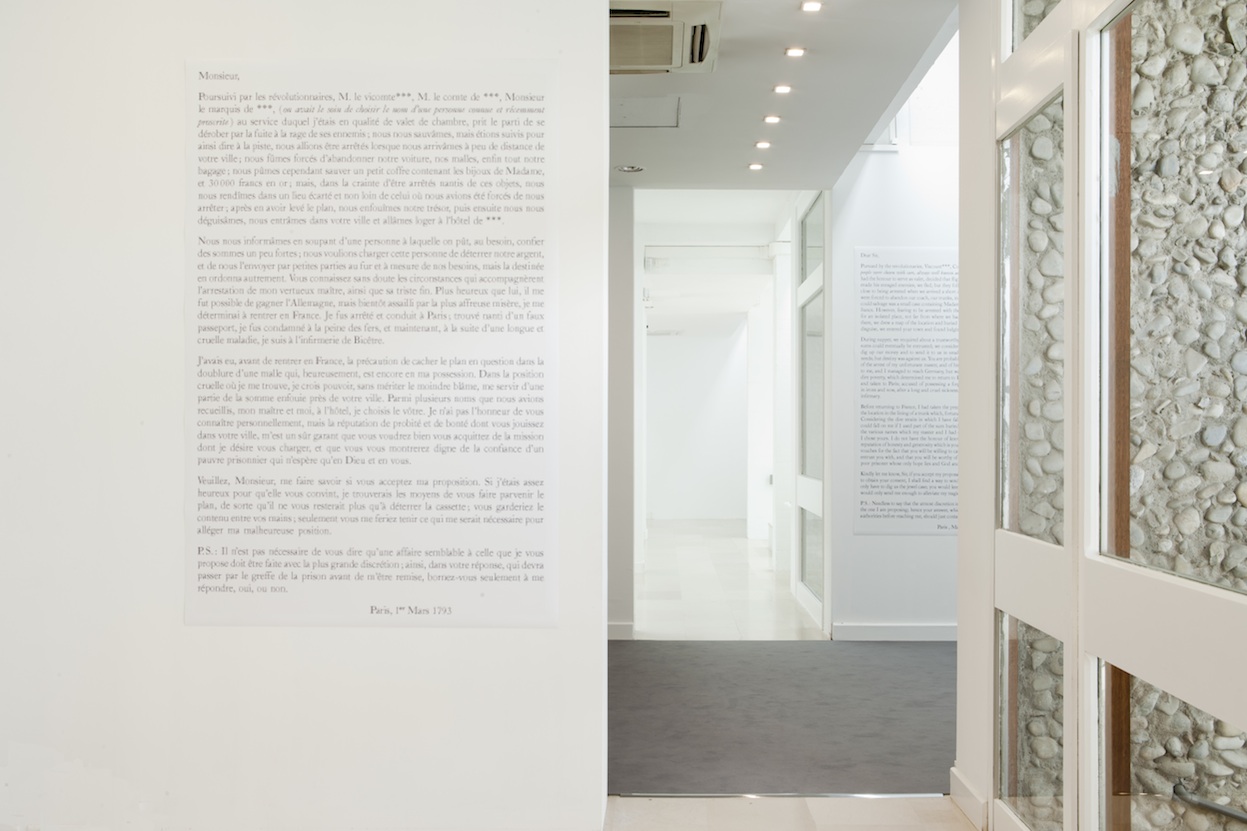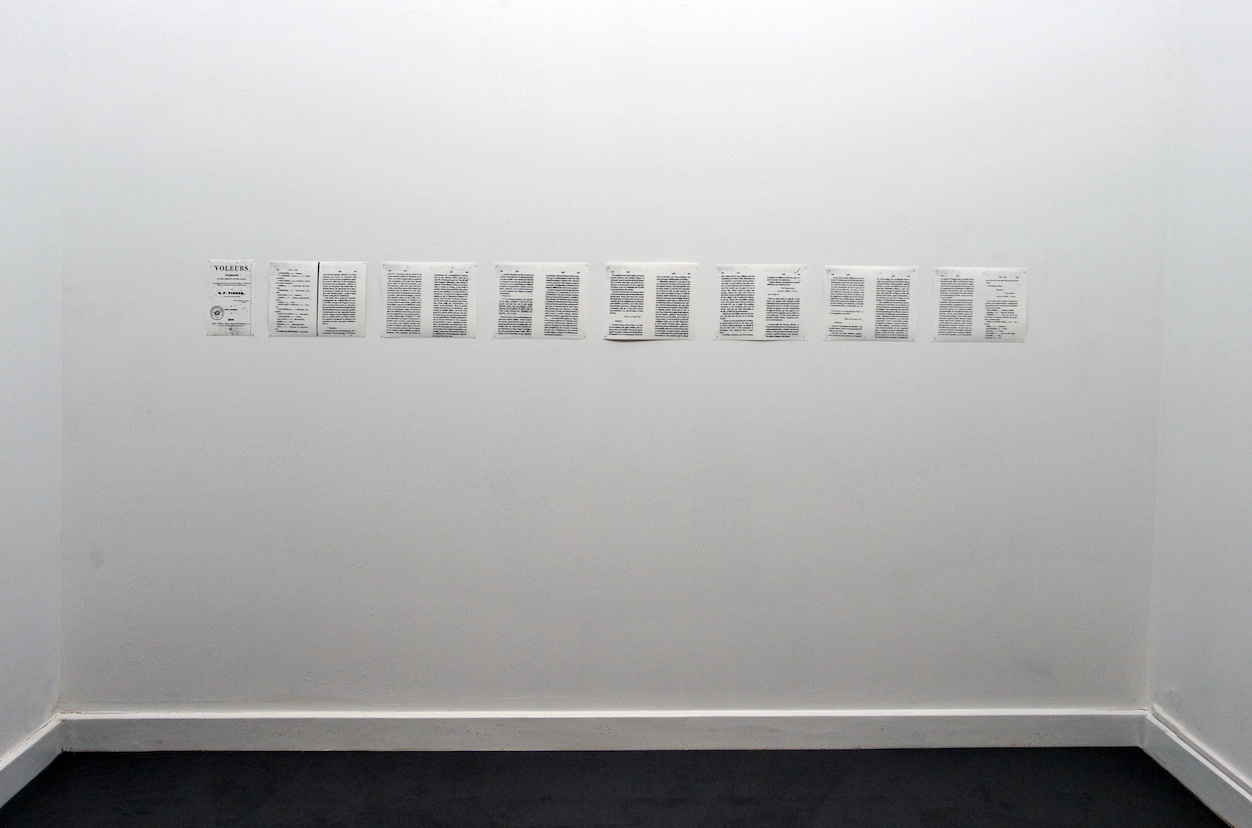The Jerusalem Letter
- AboutA remake: The Jerusalem Letter, 2014
Part 1 of Scams (I must first apologise) project
Digital prints 115 x 200 cm, 130 x 200 cm
Photo prints on archive paper 24 x 30 cm - Other Installations
The stories that unfold in these scams are part of a literary tradition known as The Jerusalem Letter, or The Spanish Prisoner. Jerusalem letters refer to a swindle that originated in France at the end of the 18th century, the mechanisms of which Eugène-François Vidocq has explained in his book The Thieves published in 1836. These letters, which have widely influenced present day scams, tell the stories of lords and their servants fleeing the events of the great history of the French Revolution.
Jerusalem letters were scams that originated in France at the end of the 18th century, the mechanisms of which were explained by Eugène-François Vidocq in his book The Thieves, published in 1836. These letters, which have widely influenced the scams of today, tell the stories of lords and their servants fleeing the events of the great history of the French Revolution. According to Vidocq, these letters express the nostalgia for the Ancient Regime felt by some of the French after the Revolution. Their name originates from the fact that most of these con artists were imprisoned near Paris, in the Bicêtre jailhouse, partially located in rue de Jerusalem.
This type of scam seems to have appeared at specific historical moments, as if its existence depended on imagination, a particular situation, and contexts that allow certain forms to arise and prosper.
This scam is spread in various manners. First circulating orally then as a letter, this scam is now faxed, printed or photocopied, and develops spectacularly with the help of the Internet, establishing a contemporary version of the scam, like a remake, two centuries later.
The text comes from a 1793 Letter of Jerusalem extracted from Vidocq’s book, which we then reworked through a pixelated device that integrates different means of diffusion in time, creating a spatial perspective that manipulates distances within the exhibition space.





